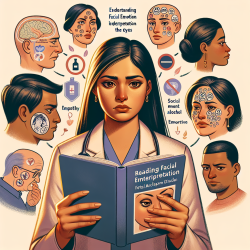The Surprising Connection Between Prescription Drugs and Speech Therapy
As a speech-language pathologist, your primary focus is on helping children communicate effectively. But did you know that understanding the trends in prescription pharmaceuticals can significantly enhance your practice? A recent study titled The geography of prescription pharmaceuticals supplied to the USA: levels, trends, and implications sheds light on crucial data that can impact your approach to therapy.
Key Findings from the Research
The research highlights a significant trend: the majority of prescription pharmaceuticals, especially generic drugs, are increasingly manufactured outside the United States, predominantly in India and China. This shift in manufacturing geography has several implications, particularly concerning drug quality, pricing, and supply chain stability. For practitioners in the field of speech therapy, these findings can influence the way we approach treatment plans, particularly when considering the potential impact of medications on speech and language development.
Why This Matters to Speech Therapists
Understanding the origin and quality of pharmaceuticals can help speech therapists make informed decisions when working with children who are on medication. Here are a few reasons why this knowledge is crucial:
- Medication Quality: The quality of medication can affect a child's health and, subsequently, their communication abilities. Being aware of where these medications are manufactured can help you advocate for the best possible treatment for your clients.
- Supply Chain Stability: Interruptions in the supply chain can lead to medication shortages, affecting treatment consistency. Speech therapists need to be prepared to adjust therapy plans if a child’s medication is suddenly unavailable.
- Collaborative Care: By understanding these trends, speech therapists can work more effectively with other healthcare providers to ensure comprehensive care for their clients.
Data-Driven Decisions in Speech Therapy
As a data-driven professional, you understand the importance of using evidence-based practices. The insights from this research can guide you in making informed decisions that enhance therapy outcomes. Consider the following steps to integrate this knowledge into your practice:
- Stay Informed: Regularly review current research on pharmaceuticals and their impact on speech and language development.
- Advocate for Quality: Work with healthcare providers to ensure your clients receive high-quality medications that support their overall health and communication goals.
- Adapt Therapy Plans: Be prepared to modify therapy plans in response to changes in medication availability or quality.
Encouraging Further Research
While this study provides valuable insights, it also highlights the need for further research into how these pharmaceutical trends specifically affect speech and language development. As practitioners, we should advocate for more studies that explore these connections and contribute to a deeper understanding of the interplay between medication and communication skills.
To read the original research paper, please follow this link: The geography of prescription pharmaceuticals supplied to the USA: levels, trends, and implications.










